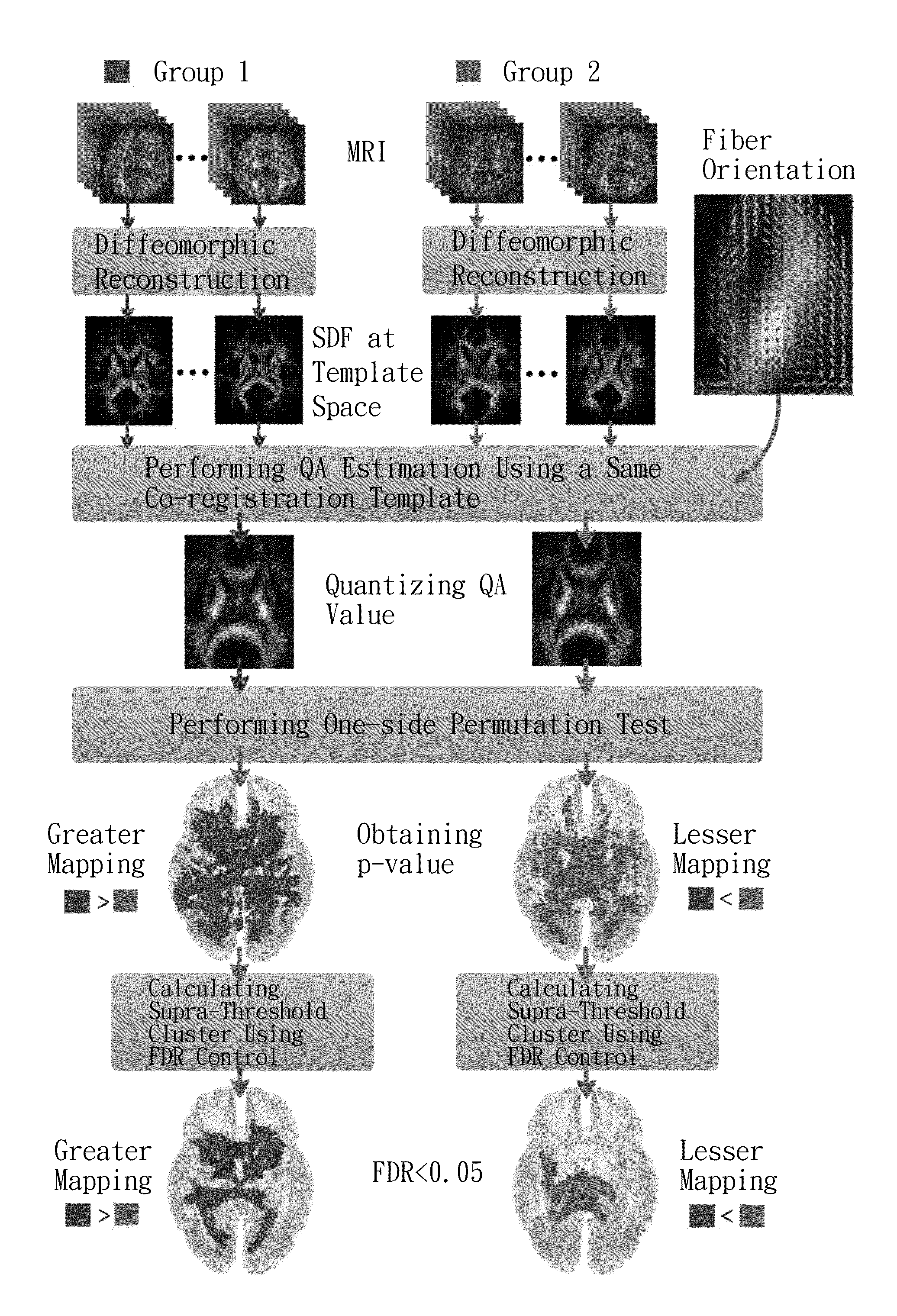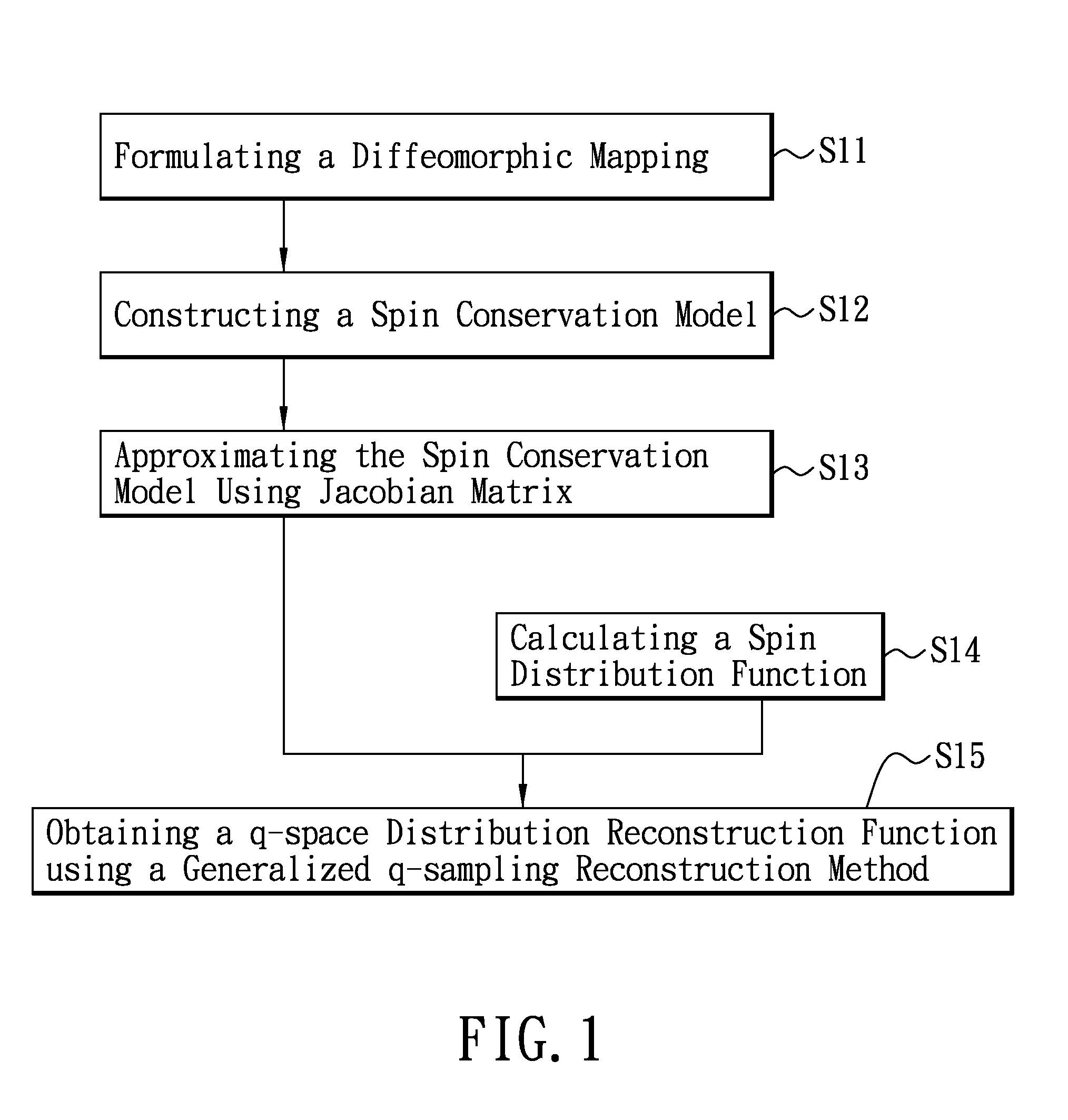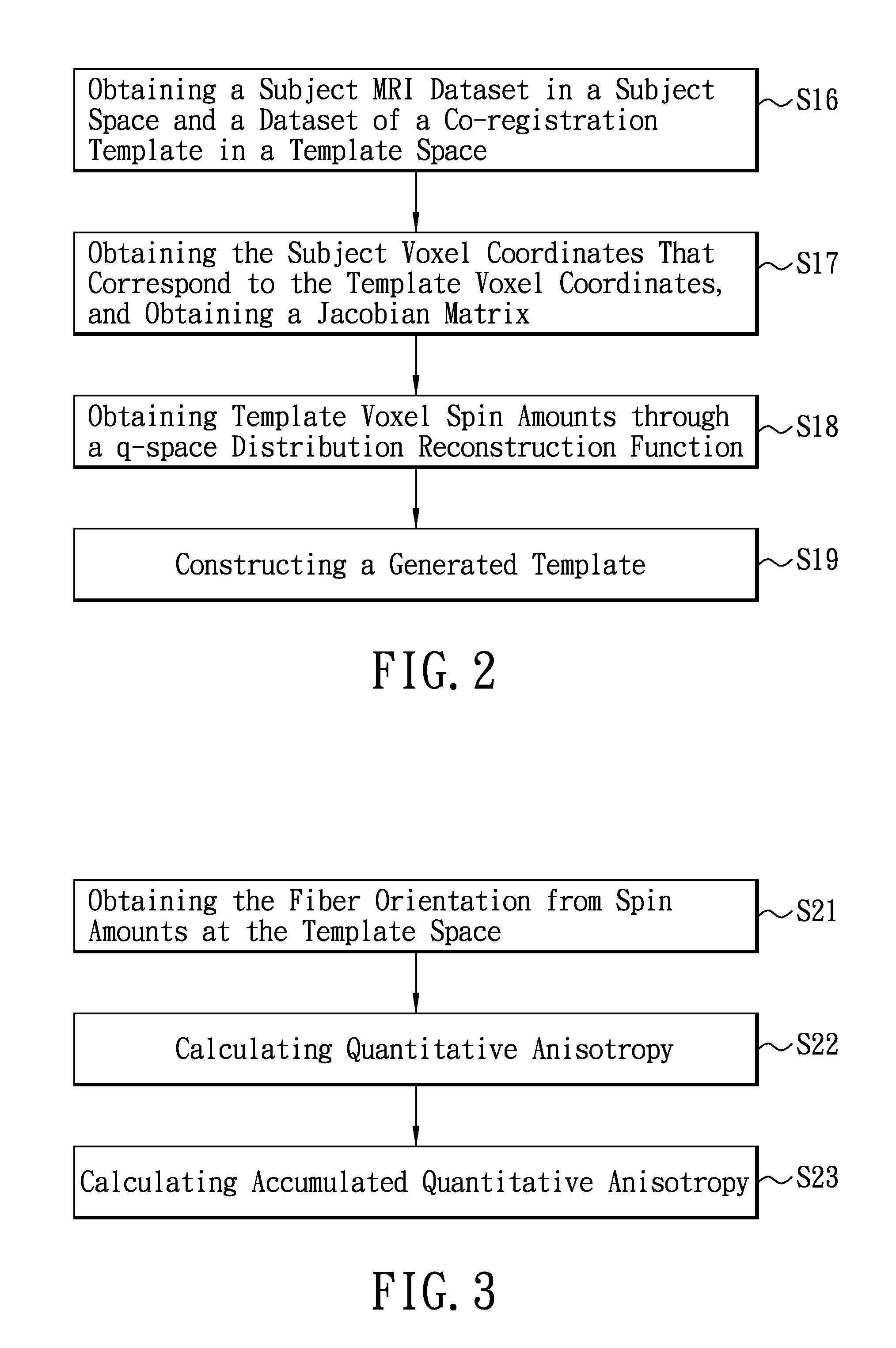Voxel-based transformation method for transforming diffusion MRI data and groups test method using the same
a technology of diffusion mri and transformation method, applied in the field of voxel-based transformation method for a magnetic resonance imaging dataset, can solve the problems of inaccuracy in the estimation of anisotropy index at fiber crossing regions, suffer from partial volume effect, vulnerable to partial volume effect, etc., and achieve the effect of precise fiber orientation
- Summary
- Abstract
- Description
- Claims
- Application Information
AI Technical Summary
Benefits of technology
Problems solved by technology
Method used
Image
Examples
Embodiment Construction
[0033]In this invention, a high angular resolution brain atlas is constructed in an international consortium for brain mapping-152 (ICBM-152) template space to show an amount of the diffusion spins in different orientations. The constructed atlas is called a generated template in the following description. The generated template uses generalized q-sampling imaging (GQI) to calculate a spin distribution function (SDF). To obtain the SDFs in the ICBM-152 space (called transformed SDF in the following text, as opposed to the original SDF, which is the SDF obtained from GQI without transformation), a method called q-space diffeomorphic reconstruction (QSDR) is proposed herein. The QSDR can calculate transformed SDFs in any given deformation field that satisfies diffeomorphism, and can preserve fiber orientations so that these orientations can be used to conduct fiber tracking. Moreover, this method aims to satisfy the conservation of diffusion spins, and the transformed SDFs can be used...
PUM
 Login to View More
Login to View More Abstract
Description
Claims
Application Information
 Login to View More
Login to View More - R&D
- Intellectual Property
- Life Sciences
- Materials
- Tech Scout
- Unparalleled Data Quality
- Higher Quality Content
- 60% Fewer Hallucinations
Browse by: Latest US Patents, China's latest patents, Technical Efficacy Thesaurus, Application Domain, Technology Topic, Popular Technical Reports.
© 2025 PatSnap. All rights reserved.Legal|Privacy policy|Modern Slavery Act Transparency Statement|Sitemap|About US| Contact US: help@patsnap.com



